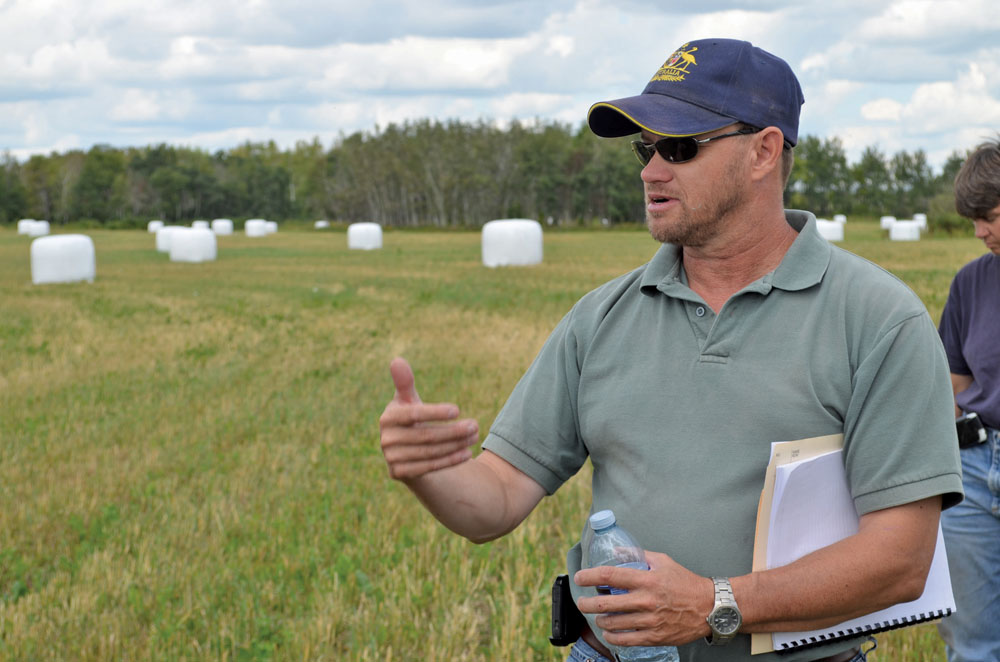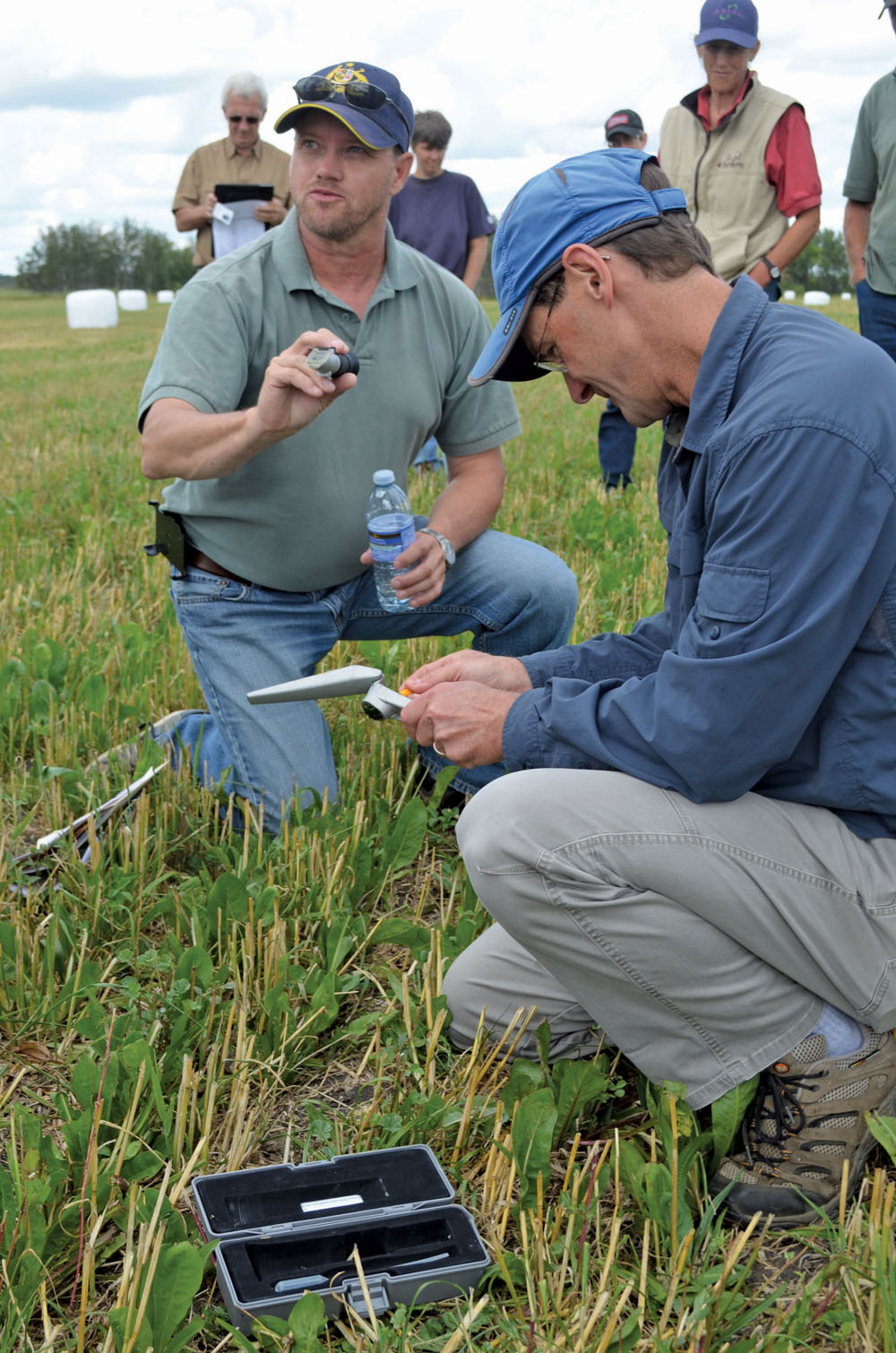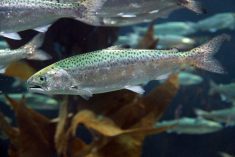Following years of research and the publication of a Nuffield study, Clayton Robins is now seeing the results of implementing a high-energy forage system on his own farm.
“The greatest hurdle to the forage-fed beef enterprise lies in the difficulty in providing an adequate level of diet energy, especially in the form of a low-cost forage of consistent feed value,” said Robins, who worked for years as a beef and forage researcher with Agriculture and Agri-Food Canada and was selected as a Canadian Scholar in 2013.
In his Nuffield study, which was published in April, Robins explores using specific species of short-term perennial forages capable of high levels of metabolizable energy.
Read Also

Linebreeding horses drives genetic bottlenecks
Too much linebreeding and prioritizing pedigree can narrow genetic diversity and lead to horse health problems in future generations.
In the endeavour of publishing the study, Robins travelled to 11 different countries and consulted over 200 grazing specialists.
“I was part of a team that went down to Argentina to look at the beef value chain and I learnt a few things about sugars. That is really what got the gears turning about how we could do this here in Canada,” said Robins.
The report outlines how grazing certain forages can provide the opportunity to produce several positive benefits to rumen digestive efficiency, decrease greenhouse gas emissions versus traditional grazing, lower the beef carbon footprint, improve soil structure and biology, induce programming of intramuscular fat cells in suckling calves and improve the healthiness and eating quality of forage-fed beef.

Practice at home
In mid-August, Robins opened his farm, located south of Rivers, to a group of producers interested in seeing his management practices at work.
“This is our fourth year with our management in this field where we have been putting out a cereal over story crop, putting it up as feed and then growing something in the bottom.
For the past four years, Robins has underseeded a cereal crop as feed with a mix of species. We seeded on the 25th of May with a bushel and a half of oats, seven pounds of festulolium, 2-1/2 pounds of chicory and plantain and two pounds of clover.”

According to Robins, the plant selections of oats, festulolium, chicory, plantain and clover, boast high-sugar levels that enable maximum gains.
“In order to replace time in a feedlot, we need something that is going to get comparable gain and I think we can do that,” he said. “We need to try and get the sugar content up and that is when you will start to see the rumen function better. At 18 per cent sugar is when really good things start to happen.”
In October last year, Robins sampled his pasture’s Italian ryegrass and chicory, which registered at 39 per cent sugar.
“This does some phenomenal things in the rumen. I believe we can get gains of three pounds a day if we have this mix as good as it can be and we cut what is in the bale as immature as possible.”
Robins aims to cut his pasture around 50 days after seeding, and bale at 50 per cent moisture.
“My goal is to cut mid-July, at the heads-emerging stage, as I want the highest-quality feed in that bale as possible, and this will also give the pasture more time for regrowth.”
Robins will graze 35 pairs over 20 acres for 60 to 90 days, depending on the speed of regrowth.
“In this field, I am budgeting for 90 days on 20 acres with 35 pairs,” he said. “Seventy cattle doing three pounds a day, for 90 days and I am getting 50 cents a day for grazing. We are talking well over $40 an acre gross income, and I think anyone wouldn’t take that in any business, grain or cattle.”
With this management program, Robins will be grazing his cattle and growing his pastures into late October, which he says will benefit both the cattle and the land.
“If we are grazing at this time of year, we are going to see calves under the age of 200 days hopefully initiate the development of marbling cells with these plants, and a year later on a pseudo-finishing diet, hopefully doing well on the same plants. There is also a lot of data to support having this cover crop growing longer is promoting soil biology, organic matter and plant health.”
Land benefits
Along with maximizing gains and lowering feed costs, Robins has seen tremendous benefits to his pasture land.
“We have built organic matter up to 6.2 per cent. Most of the land around here is five per cent, and we were able to do that fairly quickly,” he said. “The chicory roots are completely full of sugar and that is driving out of the plant into soil, and doing some great things for soil biology.”
Besides increased organic matter, he notes that the chicory root system has also helped reducing soil compaction.
“The chicory is a really good scavenger for nutrients and also has a very aggressive root, which has helped quite a bit in combating compaction issues.”
Robins also says that the plantain induces a diuretic effect, which can increase an animal’s water intake, resulting in fewer urine spots as ammonia is diluted.
















